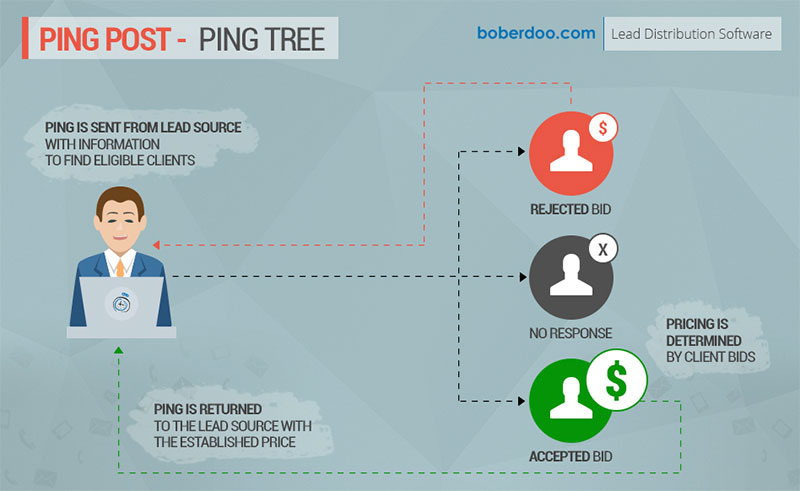
Have you heard of ping tree?
There’s a good chance the term has cropped up elsewhere in discussions about performance marketing, but even though this form of lead generation has been around a while now, few publishers really understand what it is and how it can benefit them.
A ping tree system is designed to improve conversion-rate by matching customers with best-suited financial offerings across the entire market; as determined by a set of qualifying criteria outlined by the lender, as well as sets of traffic-buying options selected beforehand by the publisher promoting the offer (this might include the amount they are prepared to bid for the lead, location, time of day, etc.).
It basically works like this: Users searching for ‘mortgage deals’, for example, will be served ads pertaining to that particular financial sector, asking the user for preliminary details, by which to determine offer-suitability.
The best-suited offer, promoted by the highest bidding publisher, is then served to the user, and then “pinged” to the next best-suited offer should the user not meet the full criteria specified by the first lender, and so forth… This is how the ping tree works.
Below:User matched to best-suited offer along the ping tree (source boberdoo)

For offers like insurance and mortgages, this is especially important, as customers naturally want a ‘whole of the market’ experience when choosing what types of financial products they want to buy, ensuring they get the best deal for their money.
On the high street, brokers will align customers with lenders according to the needs of both parties. The ping tree system works on the same principle.
1 Comment
Hey Lee,
I am doing a paper on innovative marketing strategies and I your ideas really helped me come up with some cool stuff. Thanks for sharing!